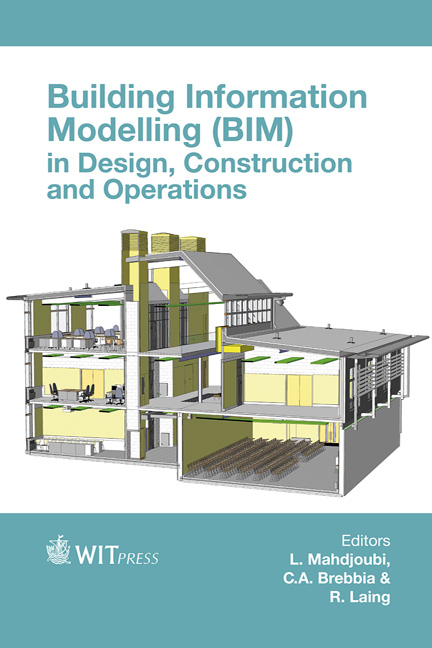BIM-GIS Community Of Practice
Price
Free (open access)
Transaction
Volume
149
Pages
12
Page Range
241 - 252
Published
2015
Size
331 kb
Paper DOI
10.2495/BIM150211
Copyright
WIT Press
Author(s)
P. A. Corcoran, D. A. Bruce, A. Elmualim, D. Fong, T. McGinley, B. Stephens
Abstract
The digital recording of spatio-temporal information within Building Information Modelling (BIM) and Geographical Information Systems (GIS) has mainly been the preserve of experts, but with the advent of more user friendly technologies, more non-spatio-temporal information experts are beginning to realise the benefits that the use of spatio-temporal information can bring.
A burgeoning area of interest has been the technological interface between BIM and GIS but allied to this are the collaborative interests of the people, who exhibit varying levels of BIM-GIS exposure, involved with such developments. A selection of staff at the University of South Australia (UniSA) developed a collaborative exercise to introduce BIM and GIS into university business processes with a view to incorporating more use within the Facilities Management Unit (FMU), whilst simultaneously widening the role of spatio-temporal information in both teaching and research.
The participants decided to operate within a Community of Practice (CoP) i.e. an arena that provides both a context and environment where people can come together to share ideas, talk about practices and learn together. On reflection, the participants thought a CoP was a suitable vehicle to explore BIM-GIS collaboration and through this discovered that, although they had differing standpoints in relation to the perceived interface between BIM and GIS, they shared similar aspirations as to the usefulness of BIM and GIS working together. There have been issues to address e.g. finding time to participate in the CoP, but nevertheless, through the creation of wayfinding project, the CoP aims to showcase and expand BIM-GIS collaboration into other areas of university.
Keywords
collaboration, university, spatio-temporal information





